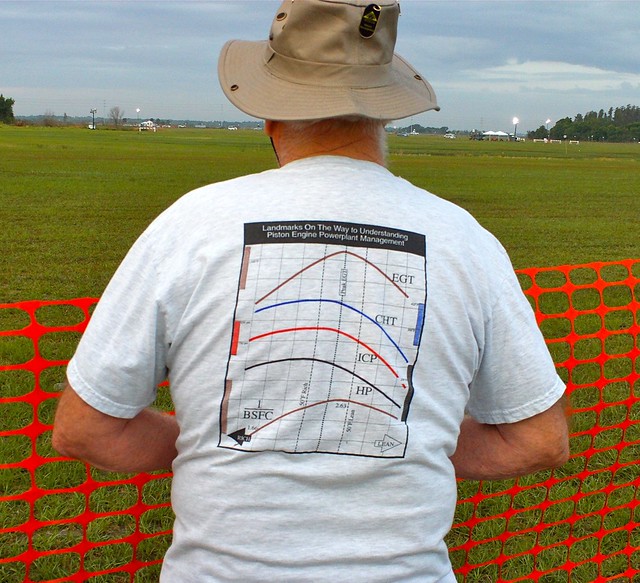dans2992
En-Route
- Joined
- Jan 7, 2013
- Messages
- 3,892
- Display Name
Display name:
Dans2992
OK, so I have a Comanche 260B (Normally aspirated Lycoming IO-540). Most of the time, I cruise around 8-10k+, so I run it at peak EGT, or slightly ROP, because I need the power up there. CHTs stay below 400.
The other day I went on a roundtrip flight of about 0.5 hours each way. I was at around 4000 ft., and decided I was going to go LOP. I do not have GAMIs, but I do know that my GAMI-spread is about 0.9 gph. Reading some of the Deakin (and other) material, I know that when LOP there is a rule of thumb saying that "HP produced = 14.9 x FuelFlow".
.65 x 260 hp = 169 hp for 65%.
169 hp / 14.9 = 11.3 gph
Since when LOP, the limiting factor for power is fuel, I figured that if I was at 11.3 gph, I would be at 65% (hence OK to be LOP), so wide open throttle, and 2300-2400 rpm, and 11.3gph LOP should be ok at 4000 ft. (all cylinders were LOP) CHTs were 360 max (and often much lower.)
Was this a mistake? Is it bad to run the engine like this?
My concern was elevated today when a look at the oil filter yielded more ferrous (and some non-ferrous) metal than normal, along with more carbon than would be typical. The only other "out of the ordinary" thing occurring between the last oil changes was six weeks of sitting due to interior work.
Would these findings be at all related to about 1 hr. of these sorts of LOP ops? Any thoughts? The mechanic says check the filter in another 25 hours, and see where we're at.
The other day I went on a roundtrip flight of about 0.5 hours each way. I was at around 4000 ft., and decided I was going to go LOP. I do not have GAMIs, but I do know that my GAMI-spread is about 0.9 gph. Reading some of the Deakin (and other) material, I know that when LOP there is a rule of thumb saying that "HP produced = 14.9 x FuelFlow".
.65 x 260 hp = 169 hp for 65%.
169 hp / 14.9 = 11.3 gph
Since when LOP, the limiting factor for power is fuel, I figured that if I was at 11.3 gph, I would be at 65% (hence OK to be LOP), so wide open throttle, and 2300-2400 rpm, and 11.3gph LOP should be ok at 4000 ft. (all cylinders were LOP) CHTs were 360 max (and often much lower.)
Was this a mistake? Is it bad to run the engine like this?
My concern was elevated today when a look at the oil filter yielded more ferrous (and some non-ferrous) metal than normal, along with more carbon than would be typical. The only other "out of the ordinary" thing occurring between the last oil changes was six weeks of sitting due to interior work.
Would these findings be at all related to about 1 hr. of these sorts of LOP ops? Any thoughts? The mechanic says check the filter in another 25 hours, and see where we're at.




